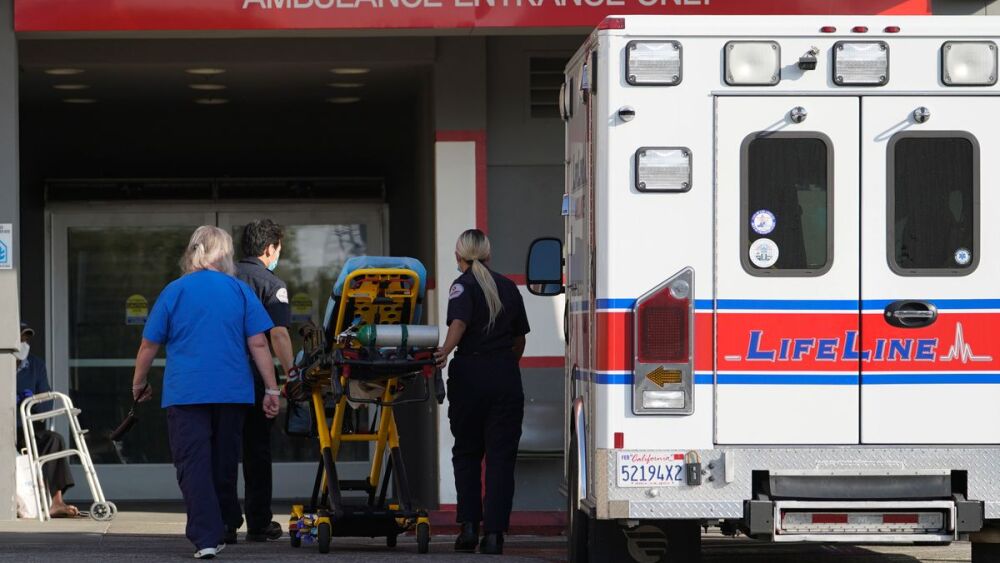This article was originally posted Apr. 21, 2016. It has been updated.
One of the main concerns for responders treating patients involved in structure fires is generally the presence of thermal burns. While burns may be the most visually obvious forms of injury from exposure to a fire, smoke inhalation is actually the leading cause of death in fire victims [1].
Smoke inhalation can cause injury and death to patients both as a result of the products of combustion contained in the smoke and due to the fact that fire may create a hypoxic environment as oxygen is used up in an enclosed space. Composition of ambient air is an important link in the life support chain and multiple aspects of a structure fire can disrupt it.
The elements of smoke
The contents of smoke can vary based on what objects have been burning. A typical home is constructed of common materials like wood, brick or concrete but a home is also filled with appliances, clothes, furniture and other items. These items are made of plastic and synthetic materials and may contain chemicals in liquid or gas form.
When synthetic materials burn, they create a variety toxic gases including carbon monoxide, hydrogen cyanide and phosgene. It is important to recognize the possibility that a victim removed from a fire in an enclosed space may have been exposed to these gases and may be suffering from symptoms associated with that exposure.
Smoke inhalation
When plastics and other manmade products – like artificial components of furniture upholstery – burn, cyanide gas is produced as a byproduct. Cyanide is considered an asphyxiant because it inhibits the cells in the body from using available oxygen in the mitochondria for cellular respiration [2].
Carbon monoxide is a byproduct of incomplete combustion and is slightly lighter than air which means that it will rise from the point of a fire and move upwards. A fire in the basement or a first floor will produce carbon monoxide, which moves upward in the house. A victim found on a second floor would likely be exposed to carbon monoxide despite the absence of obvious thermal burns.
Carbon monoxide binds to the hemoglobin in the blood more readily than oxygen does and is less likely to be released than oxygen [2]. This means that hemoglobin will be occupied by the carbon monoxide and will be unable to bind oxygen for transport around the body. Because of this behavior, carbon monoxide is also an asphyxiant: the patient enters a hypoxic state despite the availability of oxygen in the ambient air.
Some assessment techniques, like pulse oximetry, may not be useful in carbon monoxide poisoning patients as detailed below.
Read more
How burn patient treatment and destination are affected by severity
Use this guide to determine when to activate HEMS and transport to a level 1 burn center
Monitoring and assessing victims of a structure fire
When visually assessing a victim of a structure fire, it is important to look for specific indications of smoke inhalation. Patients may have soot collected around their nose and mouth and may also have singed nose or facial hair.
Patients with smoke inhalation and suffering from cyanide poisoning may experience altered level of consciousness, unresponsiveness and hypotension. Any of these signs in the presence of suspected smoke inhalation should be cause for concern.
Symptoms of carbon monoxide poisoning vary with the time and concentration of the exposure but result from the hypoxic state the patient is now experiencing. Symptoms include:
- Headache
- Fatigue
- Nausea/vomiting
- Confusion/altered level of consciousness
- Elevated heart rate
- Seizure/coma
As carbon monoxide binds to hemoglobin in the blood, it can render pulse oximetry useless because it measures the percentage of occupied hemoglobin molecules. Pulse oximetry will show a falsely high reading if those molecules are bound to carbon monoxide. As a result, SpO2 should not be considered reliable for toxic inhalation patients.
There are, however, monitors which measure the amount of carbon monoxide bound to hemoglobin in the blood. This measurement is referred to as carboxyhemoglobin saturation and is abbreviated SpCO.
Generally, patients begin to exhibit symptoms at readings of 10-20% saturation with serious effects occurring over 50% saturation [2]. SpCO monitoring is important not only for patients extricated from fires, but also for firefighters working at a structure fire. Because carbon monoxide is colorless and odorless, workplace exposure may go unnoticed until symptoms occur.
One final monitoring technology to consider for smoke inhalation patients is end-tidal capnography. There is no hard and fast rule about what reading to expect from ETCO2, but a decreased reading may be the result of impaired gas exchange due to lung injury from breathing toxic elements in the smoke.
The composition of ambient air
In relation to the life support chain, the patient discussed above is affected by the composition of the air in the environment he was extricated from. Two elements of the environment are of particular interest with regards to metabolism: the oxygen concentration and the presence of additional toxins. The atmosphere normally contains 21% oxygen and human metabolism is built around that concentration. In a structure fire, it is reasonable to expect that the environment would contain less oxygen and the patient’s ability to maintain his metabolic processes would suffer.
Since a fire burning in a structure is an example of incomplete combustion, it is also expected that carbon monoxide will be produced and begin to accumulate. Additionally, the presence of synthetic and plastic items in most residences leads to an expectation that patients removed from those environments will have been exposed to cyanide gas and other asphyxiants. Combined with a hypoxic environment, EMS providers treating these patients should have a high index of suspicion for disruptions in the life support chain.
References
- National Fire Protection Association. (n.d.). The Consequences of Fire. Retrieved from http://www.nfpa.org/press-room/reporters-guide-to-fire-and-nfpa/consequences-of-fire
- Prehospital Trauma Life Support Committee Of The National Association Of Emergency Medical Technicians In Cooperation With The Committee On Trauma Of The American College Of Surgeons. (2014). Burn injuries. In PHTLS: Prehospital trauma life support - eighth edition (pp. 406-428). Burlington, MA: Jones & Bartlett Learning.




